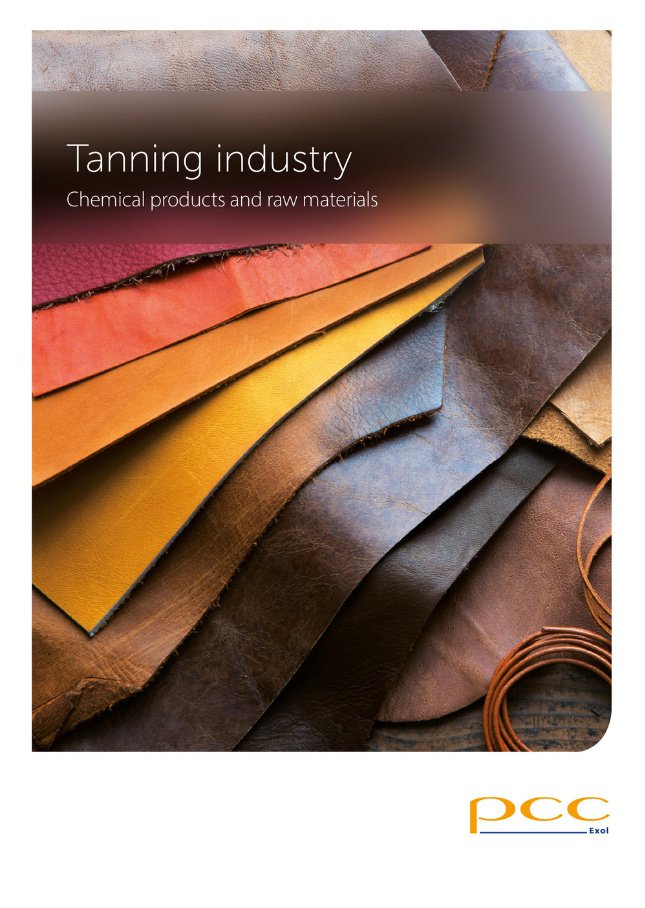Tanning belongs to the group of the most environmentally unfriendly sectors of industry. The main reason is using a substantial number of chemicals at different skin converting stages including biocides, surfactants, organic solvents and inorganic substances such as toxic chromium (III) salts. Their application is, however, necessary for the correct preparation of the material for manufacturing of leather goods.

Tanning consists in converting a raw skin or hide into leather in order to prevent their decomposition and prepare for the manufacture of various leather goods. The process is time-consuming and involves a number of complex chemical reactions and mechanical processes. Its name comes from one of the stages where tanning agents are used, both natural and synthetic. The mechanism of action consists in their irreversible chemical binding with proteins present in the skin, i.e. collagen. The procedure prevents the occurrence of possible ageing processes in the structure of collagen fibres causing decomposition of the material. Tanning is the most important stage of the raw skin treatment and gives it softness, flexibility, stability and required quality.
In addition to the considerable use of chemicals, a large amount of liquid and solid waste is produced and therefore tanning is considered as “dirty technology”. Despite the obvious risks linked with the tanning processes, this sector plays an important role in society. The specific nature of this market is based on the use of skin and hides, which are by-products of meat production, and their processing into a valuable raw material for manufacturing of a wide range of goods highly appreciated by consumers.
Initial skin treatment
The product offer includes basic chemicals commonly used in the tanning industry such as hydrochloric acid, sodium hypochlorite and sodium hydroxide. They are applied mainly in the initial skin processing stages, i.e. the so-called wet processing. Acid and alkaline solutions are used in the soaking, liming and pickling phases to prepare the material for the proper tanning step.
Tanning
A lot of inorganic compounds such as aluminium and chromium salts have tanning properties. Also natural substances of plant origin (tannins) or animal origin (liver oil) are widely used. An alternative for these components are syntans, i.e. synthetic tanning agents that may play an auxiliary role in plant and mineral tanning processes or replace the natural tannins entirely. The offer of PCC Group contains tanning agents such as Rotanina M70, which is an effective substitute for synthetic preparations with bleaching properties. Rotanina W is a syntan used for tanning of light and medium leather. If used independently, it softens the processed material and gives it light pink colouration.
Retanning and filling
A recommended product line for retanning and filling processes are acrylic dispersions, i.e. Rokryl GA series. These products work perfectly with raw material of considerable structural differences and make the leather soft and flexible giving it a full, pleasant touch. Another item in the offer is Aldehyd AG intended mainly for fur in both separate and combined tanning processes. Rofill GZA, which works well with mixtures of synthetic tanning agents and plant agents, increases the leather’s resistance to light and improves the appearance of the surface.
Leather finishing
The finishing processes are aimed at improving the properties of the leather by increasing the resistance and making it more noble. At this stage of tanning, it is recommended to use Rokryl SW1, intended for finishing the leather with an improved surface. If used independently, the product offers a soft, tacky surface with good adhesive properties and perfect resistance to numerous flexing. Another offered item is Rokryl SW25M, which has the ability to create a film ensuring higher water resistance.
The dyeing stage is particularly important in leather treatment and it partly takes place under the influence of tanning agents. Additional dyeing processes are performed with use of balancing and dispersing compounds. The use of Dyspergator NNOC E is recommended for this stage. During the colouring processes, it acts as a disperging and equalising agent. Due to its properties, it may be used in combination with different types of dyes maintaining them in a homogeneous dispersion, thus achieving a uniform leather colour.
Thickening
One of the final leather processing stages is thickening. It ensures improved homogeneity of finishing treatment and enhances the quality of the finished leather. The process is conducted mainly with respect to full grain leather. At this stage carefully selected resins are applied, which reduce surface tension and allow obtaining a desirable surface wetting and penetration of the thickening solution into the leather. Rokryl SU25 has been designed for this application and is recommended for combined application with Rokpen SU25, which regulates the Rokryl penetration depth.
Cleaning and fat removal
The offer of PCC Group also includes mixtures applied in the cleaning and degreasing processes. Roksol A87 is a preparation used in tanneries and furrieries to soak the leather in water baths at any stage of tanning. The product is also used as a component of cleaning or emulsifying preparations from household chemicals. Another item in the offer is Roksol N87, i.e. a low-foaming, non-ionic surfactant composition recommended for soaking and degreasing. The product has good wetting performance and effectively reduces surface tension thus accelerating penetration of tanning agents into the leather.

